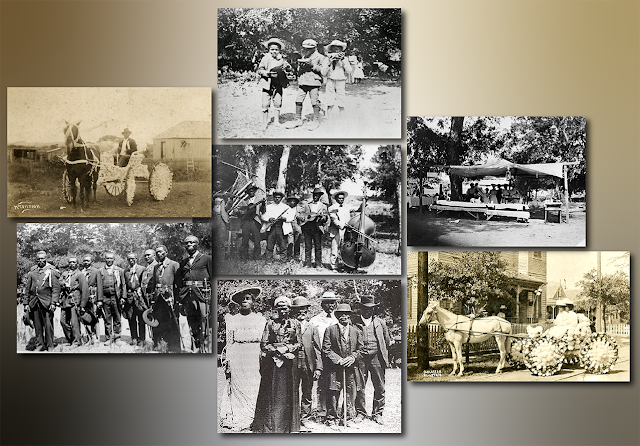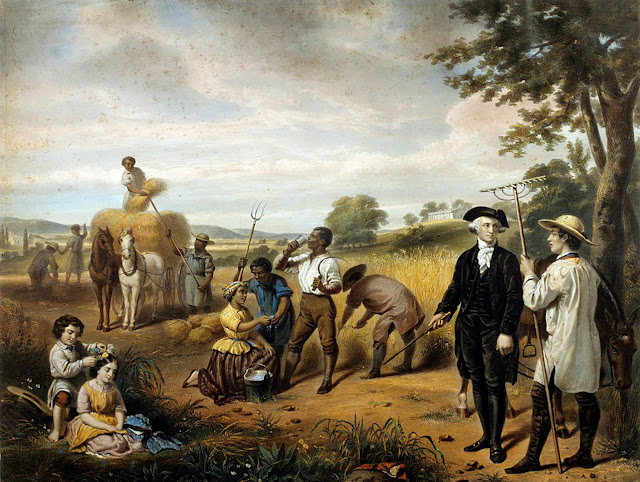By G. S. Norwood
This past weekend America celebrated a new federal holiday called Juneteenth. It has been a holiday—official and unofficial—in Texas for a long time, and those celebrations have slowly spread to other states across our nation, but June 19, 2022, was only the second time the whole country had the opportunity to celebrate the day when human enslavement was finally banished from our shores. Which seems like an excellent thing to celebrate, don’t you think?
A Bit of Juneteenth History
Juneteenth commemorates the day that United States Army General Gordon Granger landed in Galveston Bay with 4,000 mostly Black troops and an official declaration that slavery had been abolished. Black Americans were forever free. He arrived two and a half years after the Emancipation Proclamation of 1863.
Travel was slow in the United States back then. Communication even slower. The pinheaded white supremacist plantation owners of Texas knew about emancipation, but refused to share the news with the people they held in slavery. White Texans had sided with the Confederacy because they enjoyed great financial benefits from using enforced, unpaid labor. And—still licking their wounds from their defeat in the Civil War—they just simply didn’t wanna give Black people their freedom.
You think today’s Trumpist Republicans are sore losers? Post-Civil War Confederates could have taught them a thing or two about the adamant refusal to accept reality. But once General Granger brought the news to Texas, Black people didn’t look back.
 |
| When General Granger came to town, the cat was out of the bag. (KVUE). |
Community Celebrations
Not that the White power elite of Texas allowed the Black community to celebrate publicly. At least not to begin with. The celebrations started small, within family groups and the small freedmen communities the popped up all across the Lone Star State.
People would gather in parks and churches, in their own back yards or neighborhoods, and do what every American does when celebrating significant events. They brought food and music and friends. They ate and danced and flirted with the people who took their fancy. Reconnected to families, shared stories, and ate some more.
By the mid-twentieth century the celebrations became more widespread and more open. In 1980, the White establishment in the Texas legislature bowed to the inevitable, and made Juneteenth an official state holiday. I first heard of Juneteenth when I moved to Texas in 1985. Within a few years I began to hear of Juneteenth celebrations in Kansas City, St. Louis, and other cities around the country with significant Black populations.
 |
| Seven historic photos from the 1900-1913 period in Texas reflect the variety of early Texas Juneteenth celebrations. (See credits below). |
Opal Lee
But the slow spread of Juneteenth celebrations wasn’t enough for Opal Lee, a teacher, historian, philanthropist, and community activist from Fort Worth, Texas. Ms. Lee had already spent many years raising her family, founding a local food bank, and advocating for civil rights. But she felt she ought to do more. So she decided to take a walk.
Specifically, she decided to walk from Fort Worth to Washington, D. C.—a distance of about 1400 miles—to draw attention to the importance of Juneteenth not only to Black Americans, but to ALL Americans. She made that walk in 2.5 mile increments, symbolizing the two and half years between the signing of the Emancipation Proclamation and the day the news finally reached Texas. All along the way she gathered supporters, and signatures on a petition to make Juneteenth a federal holiday.
| Years of effort for a moment of triumph – and a lasting legacy. (See credits below) |
America’s Original Sin
Juneteenth is, after all, the day our nation redeemed the soul it sold in compromises over slavery when our Founding Fathers—all a bunch of White landowners—put together our nation’s Constitution.
Those Founding Fathers got an awful lot of stuff right when they wrote the Constitution. There’s a reason why it’s used as a template for other state and national constitutions all around the world. But they got the whole issue of human enslavement all wrong. Some of them, including George Washington, knew it at the time, although Washington only freed his slaves upon his death. The slaveholding landowners of the southern states and the slave traders of the north refused to budge, however.
Afraid they would lose the whole national experiment in democratic rule before it ever got off the ground, the founders caved. They sold the soul of our nation to form our nation. I guess they figured they’d be able to sort it all out at some later date.
 |
| This lithograph ca. 1853, The Life of George Washington: The Farmer is based on a painting by Junius Brutus Stearns. (See credits below). |
Juneteenth Celebrates Freedom for All
Maybe 2022 is a bit later than even the founders figured on, but here we are, still sorting out our nation’s attitudes toward race, and determining for the next generation whether we really mean all those lofty promises about freedom and equality for all. Opal Lee, now 95, believes the adoption of Juneteenth as a national holiday is a step in the right direction. “Juneteenth is freedom, but we are not free until all of us are free,” Lee said this past Saturday, as she stepped out on yet another 2.5-mile walk. “There’s still work to be done.”
Lee recommends five ways to mark this new-to-White-folks holiday: reflection on our shared history; joyful celebration of the progress we’ve made; respect for the wisdom of our elders through the sharing of their stories; a “jamboree of feasting and fellowship”; and inclusion.
“No matter who you are,” Lee said, “Juneteenth is a unifier that represents freedom.”
 |
| In one of a whole collection of wonderful photos from the 2022 Juneteenth celebrations by CNN, Carlton Anderson performs in a Spartanburg SC spoken word event, 6/17/2022. (See credits below). |
Editor’s Note
If you enjoyed this post about Juneteenth, you might also enjoy some of G.’s other posts about Texas history and culture. In posts related to her stories Deep Ellum Pawn and Deep Ellum Blues, you might enjoy her music-history posts The Legend of Robert Johnson and Deep Ellum Blues, the Song.
She and her sister Jan S. Gephardt co-wrote Whose History? But for G’s solo dives into Texas history and culture, see Layers of History and a Darn Good Dog, A Bowl of Red, and Lady Bird and the Wildflowers. For a look at unfolding “contemporary history” and culture in Texas, see Surviving a Not-So-Natural Disaster, What are They Thinking? And Is Texas Crazy? We think you’ll come away both enlightened and entertained.
IMAGE CREDITS
We have a lot of people to thank and acknowledge for the imagery that illustrates this post. Many thanks, first of all, to KVUE in Austin, TX for the detail from the Galveston Daily News issue of June 21, 1865, which published General Granger’s General Order Number Three. The other two single images have somewhat more complicated stories.
The Life of George Washington: The Farmer is a colored lithograph created around 1853 by a French lithographer named Régnier and printed by the Parisian printer Lemercier. Enslaved African-Americans labor in the background, while white children play in the lower left corner and George Washington is portrayed talking with another white man in the lower right. It is based on a painting, Washington as a Farmer at Mount Vernon, part of the “Washington Series,” (1847-1856) by the American painter Junius Brutus Stearns. The image is available via Wikimedia Commons.
One photo from a CNN gallery of wonderful pictures captured during the 2022 Juneteenth celebrations shows a man named Carlton Anderson as he participates in a spoken word event in Spartanburg, SC. CNN credited the photo to Alex Hicks Jr. of the Spartanburg Herald-Journal, via the USA Today Network. This one especially caught our art director’s fancy, but the entire collection is well worth a look.
The Early Juneteenth Celebrations
Both montages were assembled and composed by Jan S. Gephardt. When it comes to the historical Juneteenth photos, there is a massive wealth of absolutely wonderful photos. Early Texas celebrations took a variety of expressions, and there are especially delightful collections from Austin in 1900 and the Houston/Corpus Christi area in 1913. Public Domain Review is one source for far more wonderful images than we could portray here. You may remember Jan and the Homecoming Mums last February. She faced a similar temptation when it came to the decorated Juneteenth carriages and wagons.
The early Juneteenth photo montage centers on a Grace Murray Stephenson photo of a band that played in Eastwoods Park in Austin, TX, ca. 1900. Others by Stephenson, and apparently taken at the same event, show (clockwise from lower right) a group of Civil War re-enactors; children enjoying refreshments, a picnic table under a canopy, and elders who had formerly been enslaved.
The two sepia-tinged photos of decorated carriages come from two different libraries. At upper left, a photo by George McCuiston shows Daniel N. Leathers Sr. in Corpus Christi TX. The photo comes from the SMU Libraries. A note on the Public Domain Review page (scroll down) says of Leathers, “Born in North Carolina in 1855, [he] moved to Corpus Christi and became a successful merchant and was involved in state politics. A public housing development in Corpus Christi named in his honor was destroyed in 2017 to make way for the Harbor Bridge.”
In the lower right, a photo by Schlueter of Houston shows Martha Yates Jones and Pinkie Yates, “the Snow Balls of the Flower Parade, 1908,” in their decorated carriage. That one came from the Houston Public Library.
Opal Lee
Opal Lee’s montage opened a similar cornucopia of photo possibilities. Clockwise from lower left, Opal Lee speaks about Juneteenth at Ft. Worth City Hall in 2015. She leads a triumphant crowd on the first Federal holiday of Juneteenth, in Ft. Worth in 2021. Lee is the subject of a montage by MarketWatch in the upper right. Below at right, part of a 2020 Juneteenth walk in Ft. Worth, and below center, President Biden hands Lee a pen he used to sign the Juneteenth Federal Holiday into law, on 6/17/2021 in Washington DC. Vice President Kamala Harris stands beside her. Many thanks to all, and happy Juneteenth!

No comments:
Post a Comment